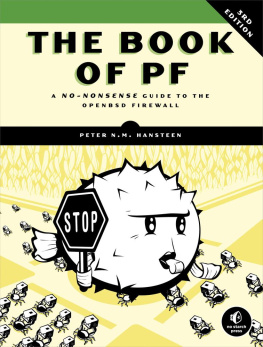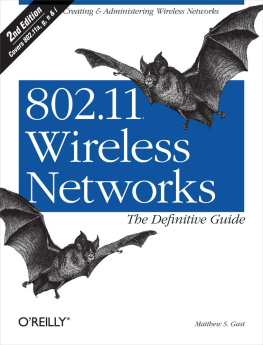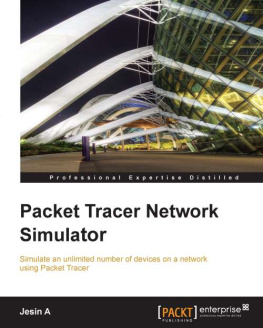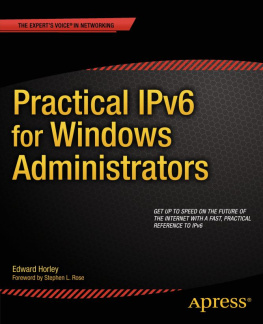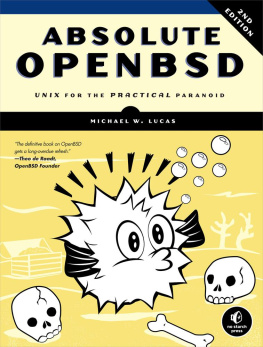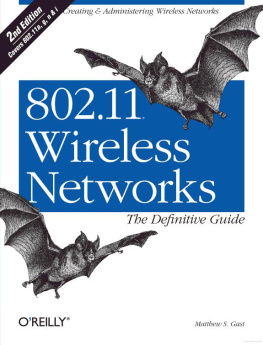The Book of PF: A No-Nonsense Guide to the OpenBSD Firewall
Peter N.M. Hansteen
Published by No Starch Press
To Gene Scharmann, who all those years ago nudged me in the direction of free software
Praise for The Book of PF
The definitive hardcopy guide to deployment and configuration of PF firewalls, written in clear, exacting style. Its coverage is outstanding.
C HAD P ERRIN , T ECH R EPUBLIC
This book is for everyone who uses PF. Regardless of operating system and skill level, this book will teach you something new and interesting.
BSD M AGAZINE
With Mr. Hansteen paying close attention to important topics like state inspection, SPAM, black/grey listing, and many others, this must-have reference for BSD users can go a long way to helping you fine-tune the who/what/where/when/how of access control on your BSD box.
I NFO W ORLD
A must-have resource for anyone who deals with firewall configurations. If youve heard good things about PF and have been thinking of giving it a go, this book is definitely for you. Start at the beginning and before you know it youll be through the book and quite the PF guru. Even if youre already a PF guru, this is still a good book to keep on the shelf to refer to in thorny situations or to lend to colleagues.
D RU L AVIGNE , AUTHOR OF BSD H ACKS AND T HE D EFINITIVE G UIDE TO PC-BSD
The book is a great resource and has me eager to rewrite my aging rulesets.
; LOGIN :
This book is a super easy read. I loved it! This book easily makes my Top 5 Books list.
D AEMON N EWS
Foreword from the first edition
OpenBSDs PF packet filter has enjoyed a lot of success and attention since it was first released in OpenBSD 3.0 in late 2001. While youll find out more about PFs history in this book, in a nutshell, PF happened because it was needed by the developers and users of OpenBSD. Since the original release, PF has evolved greatly and has become the most powerful free tool available for firewalling, load balancing, and traffic managing. When PF is combined with CARP and pfsync, PF lets system administrators not only protect their services from attack, but it makes those services more reliable by allowing for redundancy, and it makes them faster by scaling them using pools of servers managed through PF and relayd.
While I have been involved with PFs development, I am first and foremost a large-scale user of PF. I use PF for security, to manage threats both internal and external, and to help me run large pieces of critical infrastructure in a redundant and scalable manner. This saves my employer (the University of Alberta, where I wear the head sysadmin hat by day) money, both in terms of downtime and in terms of hardware and software. You can use PF to do the same.
With these features comes the necessary evil of complexity. For someone well versed in TCP/IP and OpenBSD, PFs system documentation is quite extensive and usable all on its own. But in spite of extensive examples in the system documentation, it is never quite possible to put all the things you can do with PF and its related set of tools front and center without making the system documentation so large that it ceases to be useful for those experienced people who need to use it as a reference.
This book bridges the gap. If you are a relative newcomer, it can get you up to speed on OpenBSD and PF. If you are a more experienced user, this book can show you some examples of the more complex applications that help people with problems beyond the scope of the typical. For several years, Peter N.M. Hansteen has been an excellent resource for people learning how to apply PF in more than just the How do I make a firewall? sense, and this book extends his tradition of sharing that knowledge with others. Firewalls are now ubiquitous enough that most people have one, or several. But this book is not simply about building a firewall, it is about learning techniques for manipulating your network traffic and understanding those techniques enough to make your life as a system and network administrator a lot easier. A simple firewall is easy to build or buy off the shelf, but a firewall you can live with and manage yourself is somewhat more complex. This book goes a long way toward flattening out the learning curve and getting you thinking not only about how to build a firewall, but how PF works and where its strengths can help you. This book is an investment to save you time. It will get you up and running the right wayfaster, with fewer false starts and less time experimenting.
Bob Beck
Director, The OpenBSD Foundation
http://www.openbsdfoundation.org/
Edmonton, Alberta, Canada
Acknowledgments
This manuscript started out as a user group lecture, first presented at the January 27, 2005 meeting of the Bergen [BSD and] Linux User Group (BLUG). After I had translated the manuscript into English and expanded it slightly, Greg Lehey suggested that I should stretch it a little further and present it as a half day tutorial for the AUUG 2005 conference. After a series of tutorial revisions, I finally started working on what was to become the book version in early 2007.
The next two paragraphs are salvaged from the tutorial manuscript and still apply to this book:
This manuscript is a slightly further developed version of a manuscript prepared for a lecture which was announced as (translated from Norwegian):
This lecture is about firewalls and related functions, with examples from real life with the OpenBSD projects PF (Packet Filter). PF offers firewalling, NAT, traffic control, and bandwidth management in a single, flexible, and sysadmin-friendly system. Peter hopes that the lecture will give you some ideas about how to control your network traffic the way you wantkeeping some things outside your network, directing traffic to specified hosts or services, and of course, giving spammers a hard time.
Some portions of content from the tutorial (and certainly all the really useful topics) made it into this book in some form. People who have offered significant and useful input regarding early versions of this manuscript include Eystein Roll Aarseth, David Snyder, Peter Postma, Henrik Kramshj, Vegard Engen, Greg Lehey, Ian Darwin, Daniel Hartmeier, Mark Uemura, Hallvor Engen, and probably a few who will remain lost in my mail archive until I can grep them out of there.
I would like to thank the following organizations for their kind support: the NUUG Foundation for a travel grant, which partly financed my AUUG 2005 appearance; the AUUG, UKUUG, SANE, BSDCan, AsiaBSDCon, NUUG, BLUG and BSD-DK organizations for inviting me to speak at their events; and the FreeBSD Foundation for sponsoring my trips to BSDCan 2006 and EuroBSDCon 2006.
Much like the first, the second edition was written mainly at night and on weekends, as well as during other stolen moments at odd hours. I would like to thank my former colleagues at FreeCode for easing the load for a while by allowing me some chunks of time to work on the second edition in between other projects during the early months of 2010. I would also like to thank several customers, who have asked that their names not be published, for their interesting and challenging projects, which inspired some of the configurations offered here. You know who you are.
The reason this third edition exists is that OpenBSD 5.5 introduced a new traffic shaping system that replaced ALTQ. Fortunately Bill Pollock and his team at No Starch Press agreed that this new functionality combined with several other improvements since the second edition were adequate reason to start work on the third edition during the second half of 2013.

